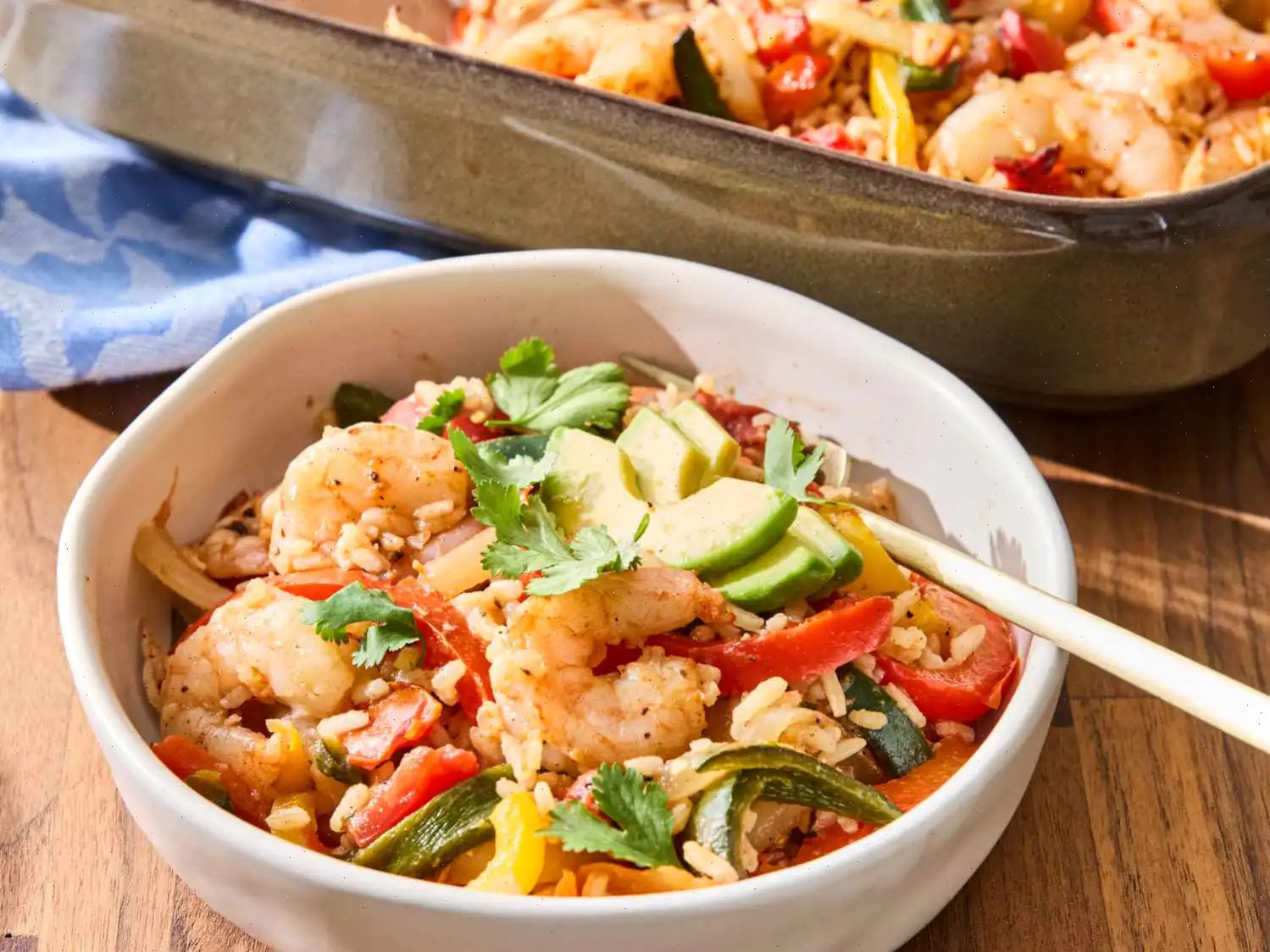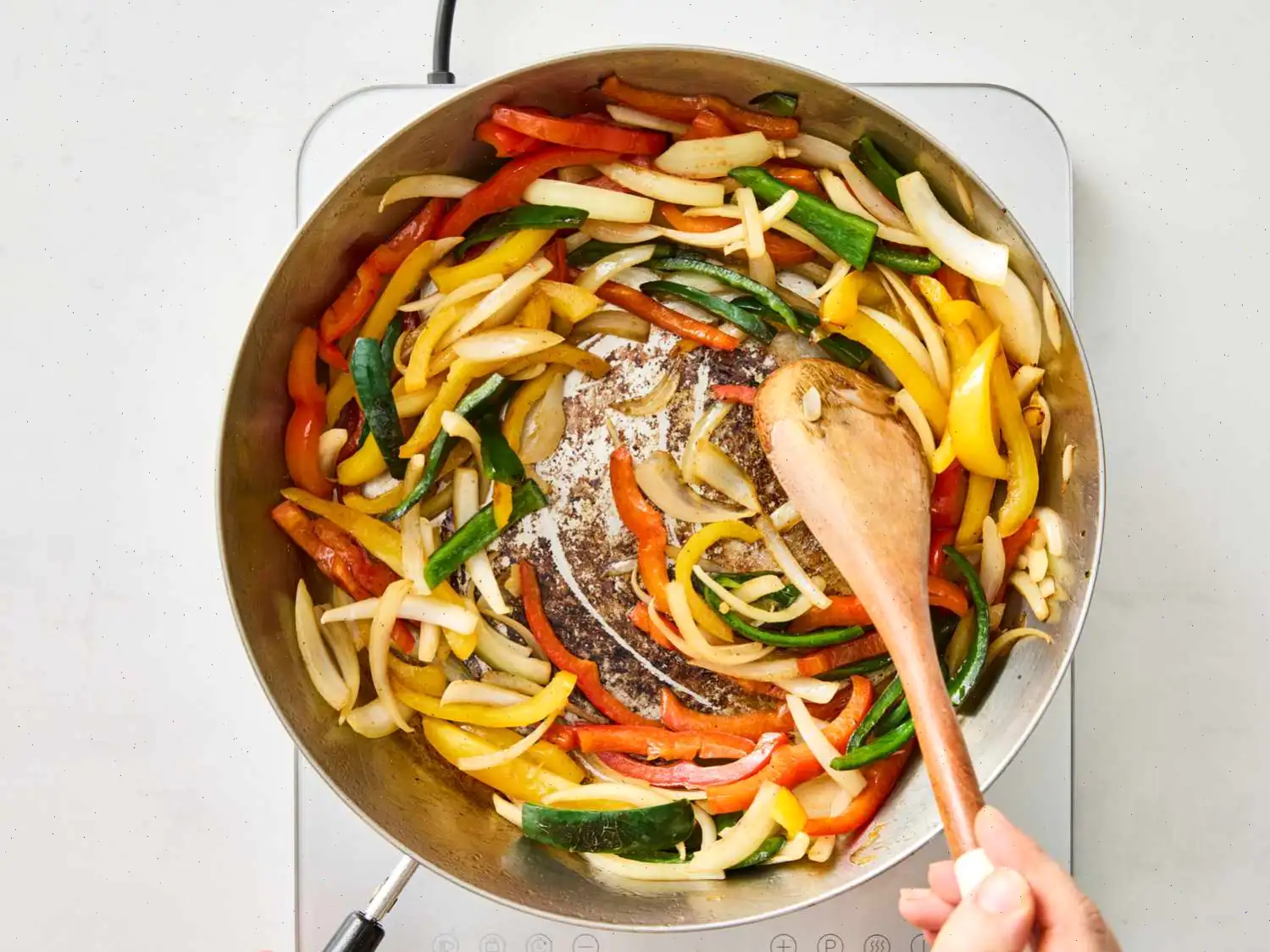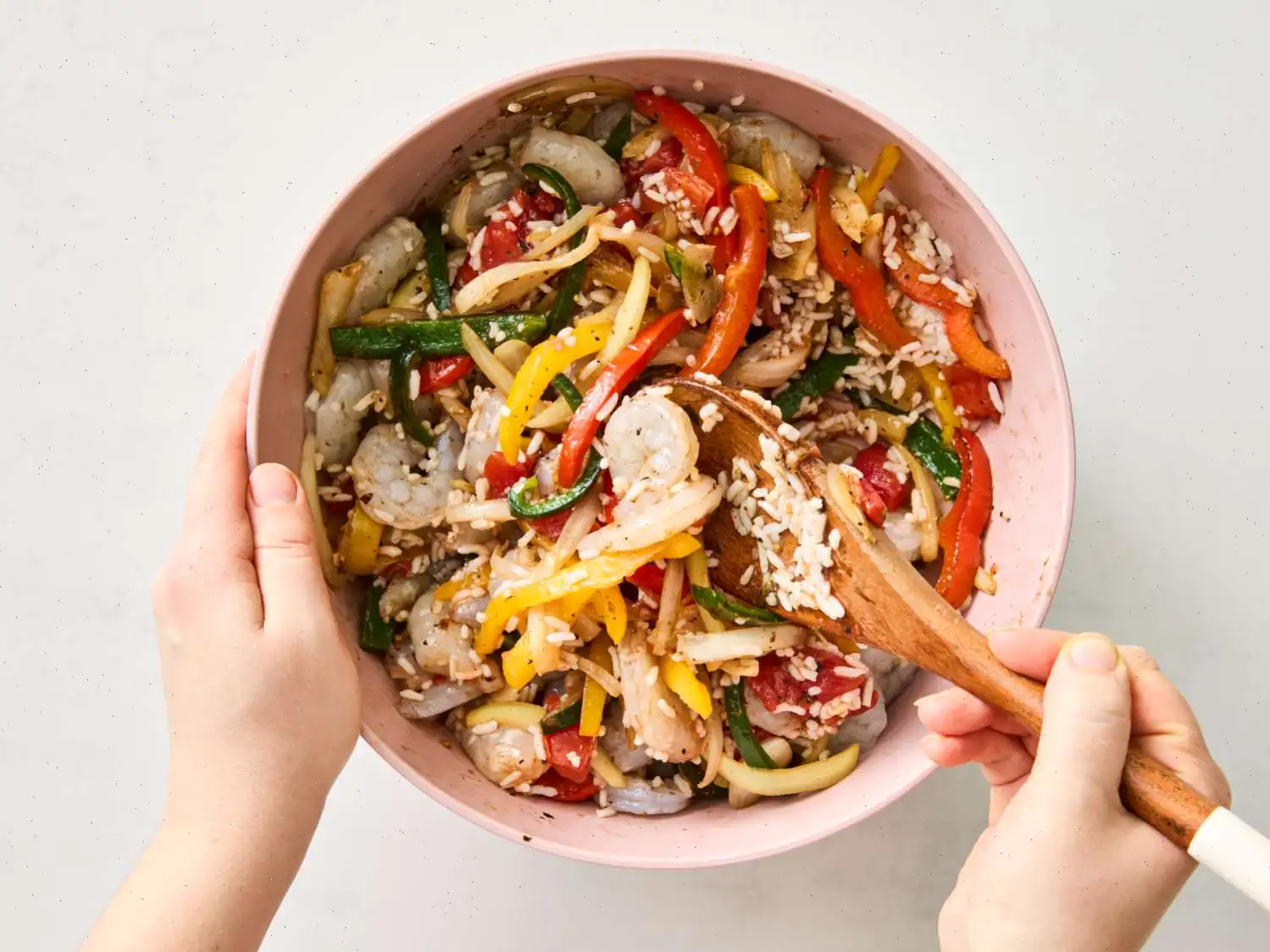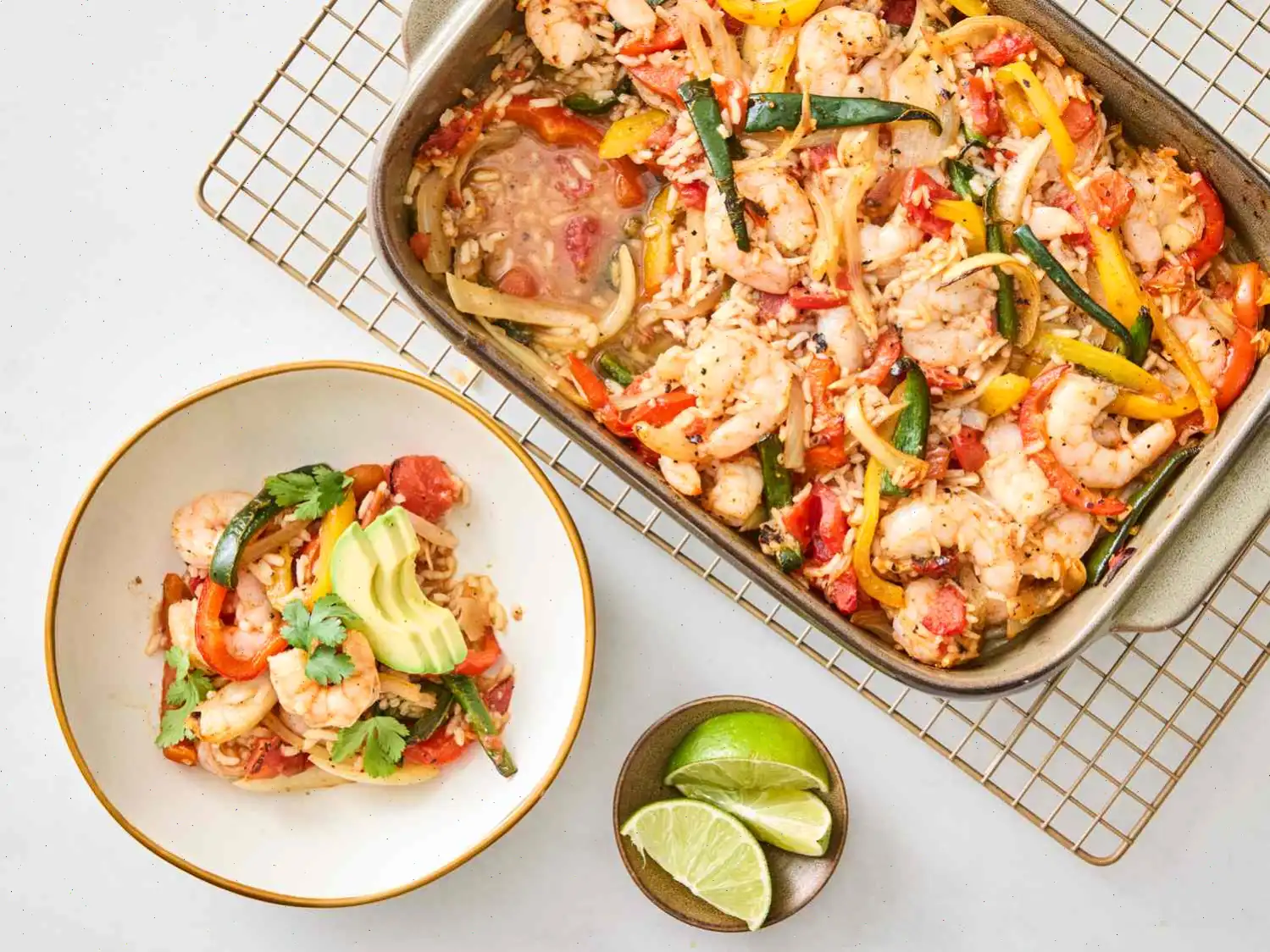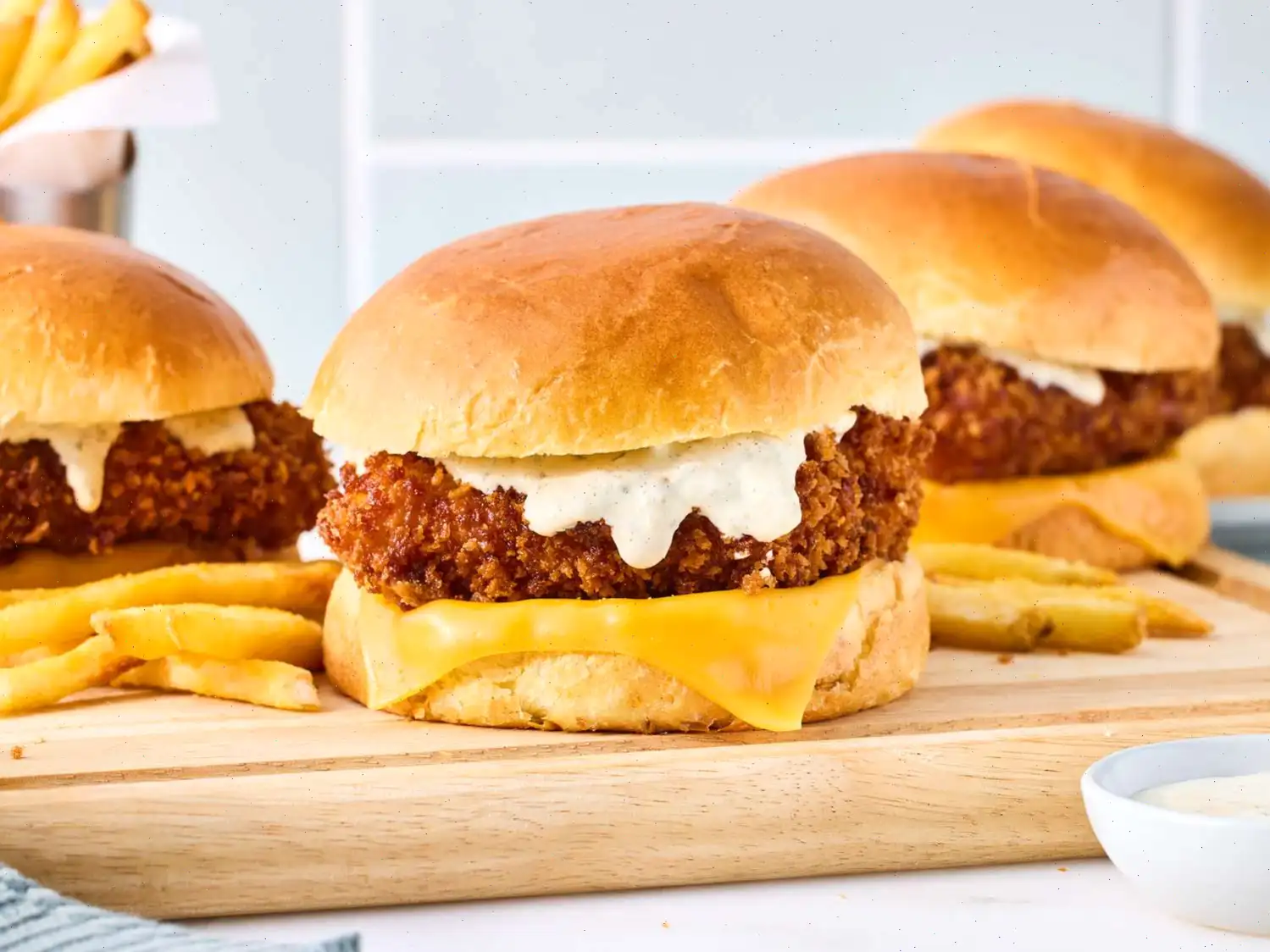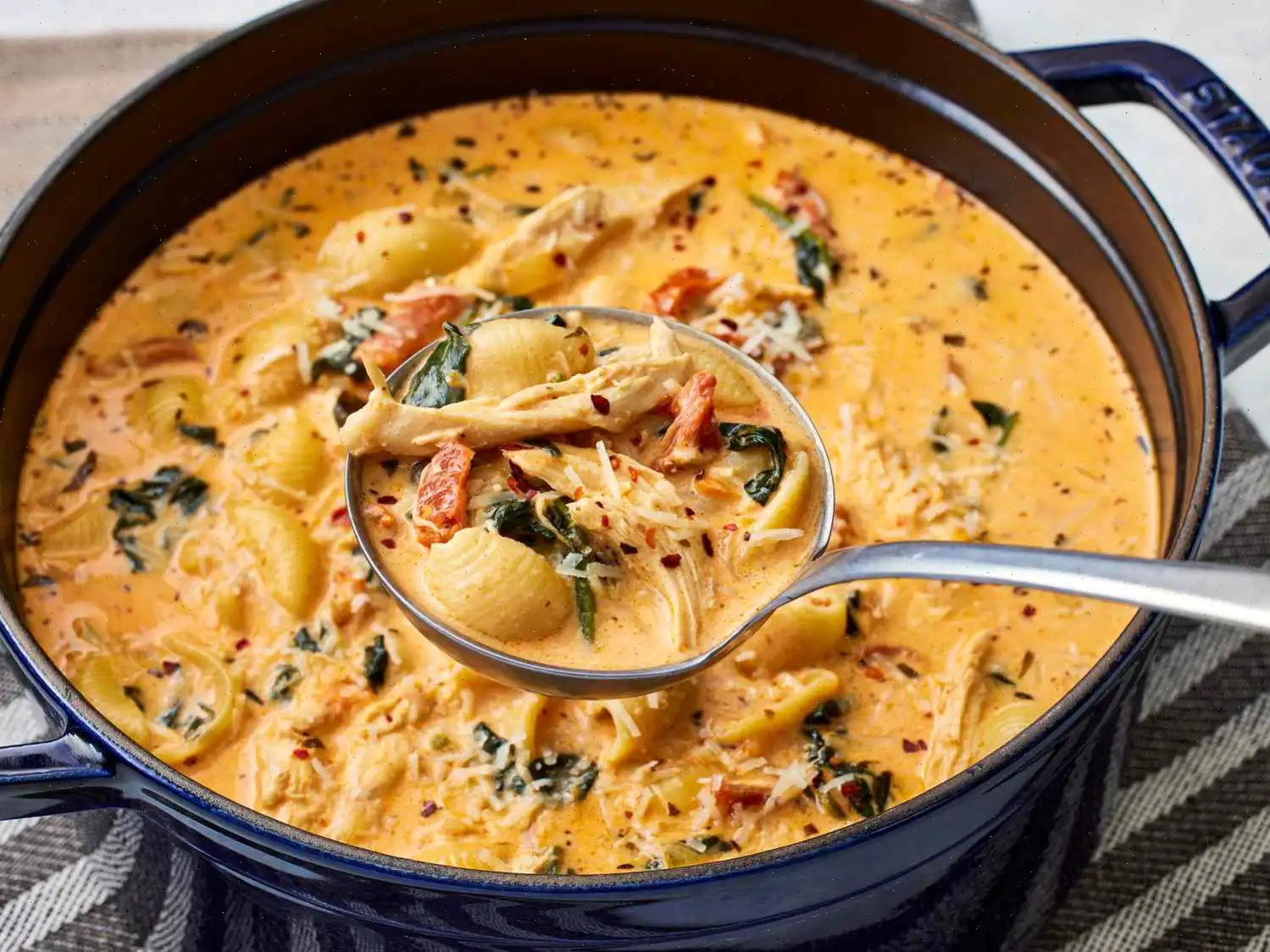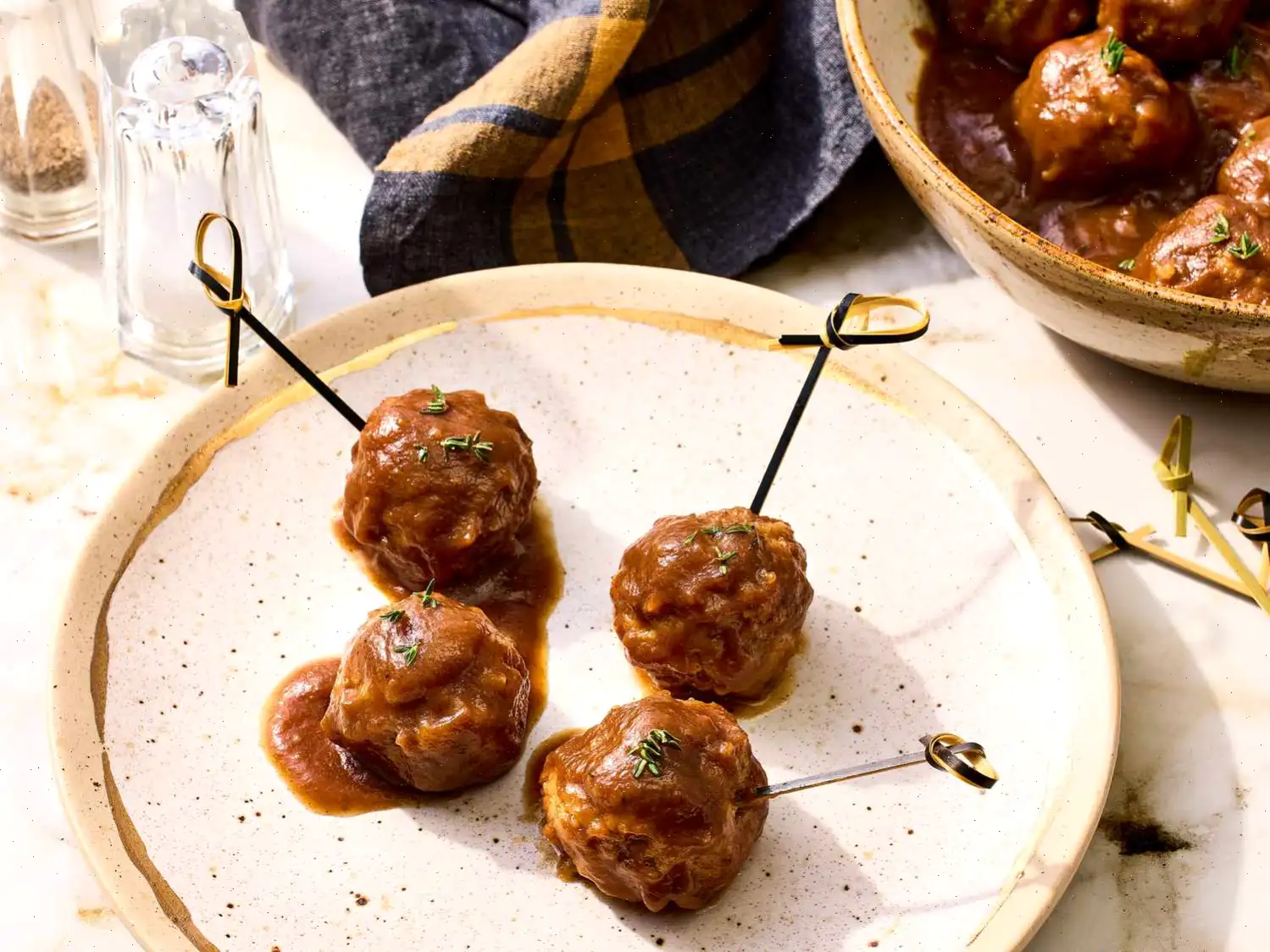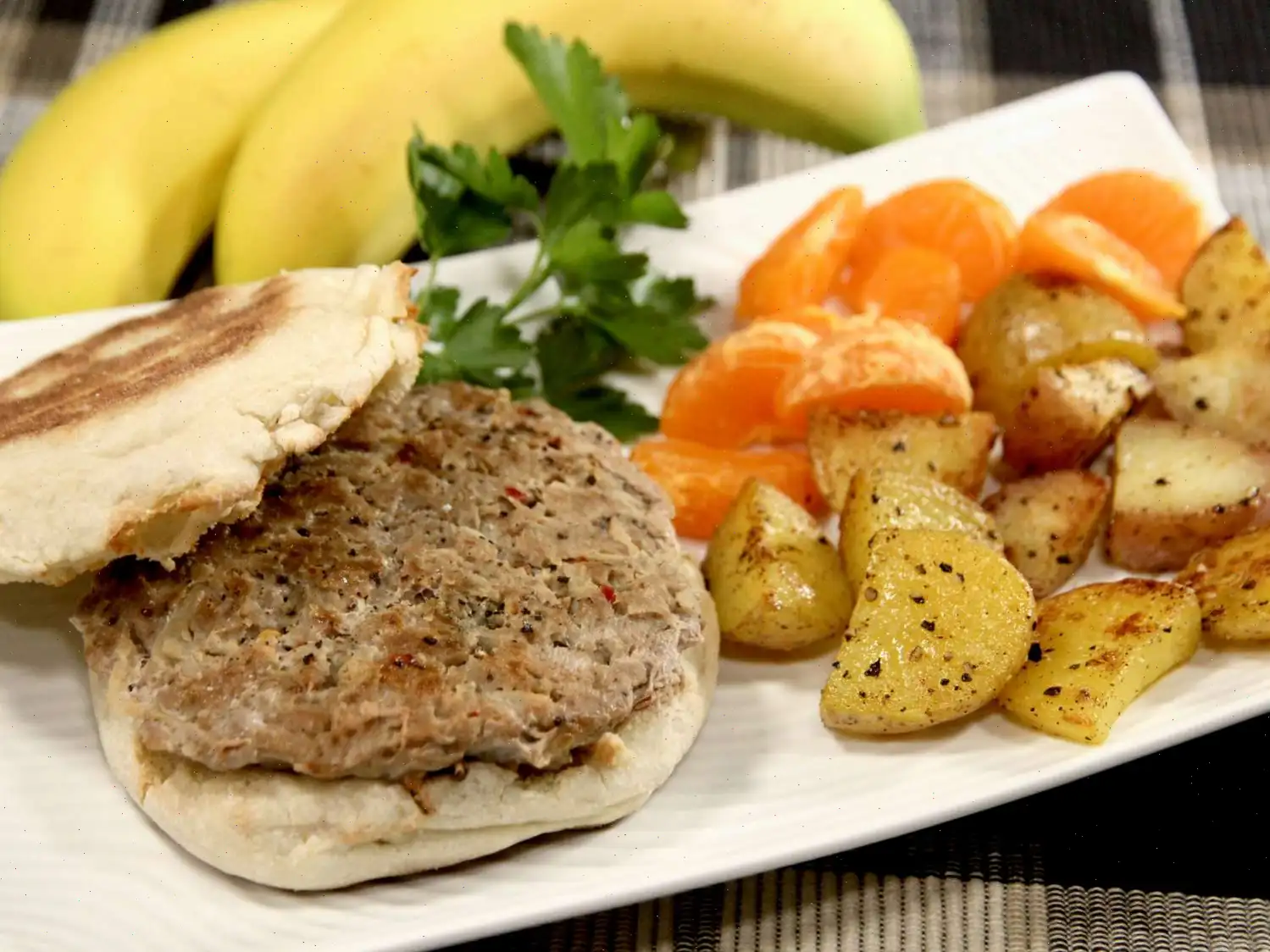
Shrimp Fajita Rice Casserole Recipe
Ingredients
- 1 tablespoon vegetable oil
- 1 red bell pepper, cut into thin strips
- 1 yellow bell pepper, cut into thin strips
- 1 poblano pepper, seeded and cut into thin strips
- 1 small onion, sliced
- 3 cloves garlic, thinly sliced
- 1/2 teaspoon salt
- 1/2 teaspoon freshly ground black pepper
- 1/2 teaspoon ground cumin
- 1/2 teaspoon dried oregano
- 1 pound frozen peeled cooked large shrimp, tails removed, thawed (31 to 35 per pound)
- 1 (14.5 ounce) can fire roasted diced tomatoes
- 1 1/2 cups cooked long grain white rice
- Sliced avocado
- Sour cream, as needed
- Chopped fresh cilantro
- Lime wedges
Directions
Start by gathering all the ingredients. Preheat your oven to 400F (200C) and lightly coat a 2-quart baking dish with nonstick cooking spray.
Heat the vegetable oil in a 12-inch skillet over medium-high heat. Once hot, add the red, yellow, and poblano peppers along with the onion. Stir occasionally and cook until the vegetables are softened, about 6 minutes.
Add the garlic, salt, pepper, cumin, and oregano to the skillet. Continue stirring for another minute, allowing the spices to release their fragrance.
In a large mixing bowl, combine the pepper-onion mixture with the shrimp, the undrained fire-roasted diced tomatoes, and the cooked rice. Stir everything together until evenly combined.
Transfer the mixture into the prepared baking dish and cover it tightly with foil. Bake in the preheated oven for about 20 minutes, or until heated through.
Once done, remove from the oven and top with sliced avocado, sour cream, and fresh cilantro. Serve with lime wedges on the side for an added burst of freshness.
Nutrition Facts (per serving)
| Calories | 328 |
| Total Fat | 16g (21%) |
| Saturated Fat | 3g (16%) |
| Cholesterol | 167mg (56%) |
| Sodium | 982mg (43%) |
| Total Carbohydrate | 27g (10%) |
| Dietary Fiber | 7g (27%) |
| Total Sugars | 5g |
| Protein | 21g (43%) |
| Vitamin C | 66mg (73%) |
| Calcium | 139mg (11%) |
| Iron | 2mg (11%) |
| Potassium | 731mg (16%) |
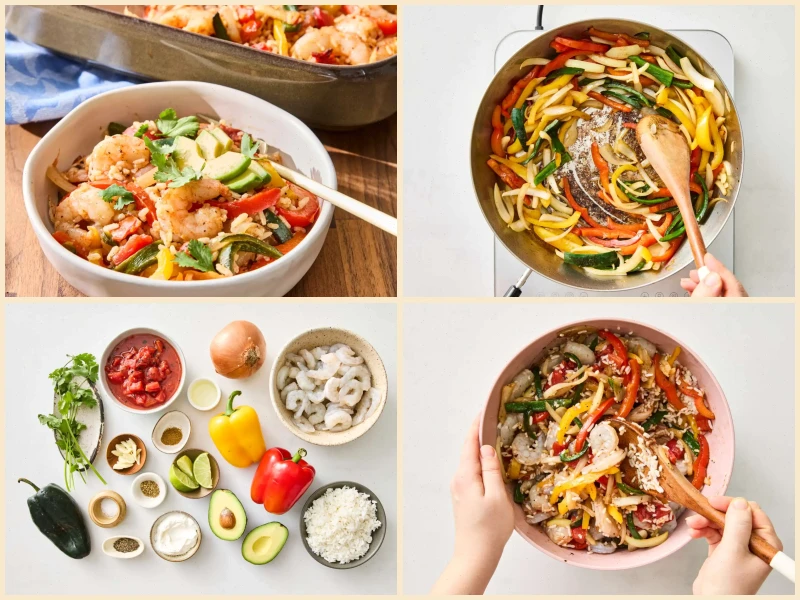
The Story Behind Shrimp Fajita Rice Casserole
Shrimp Fajita Rice Casserole is a modern twist on traditional Tex-Mex cuisine, blending the vibrant flavors of Mexican fajitas with the comforting, hearty texture of a baked rice dish. Its origins can be traced back to the culinary experiments of Tex-Mex home cooks in the southwestern United States, particularly in Texas, during the late 20th century. Seeking a way to combine the popular shrimp fajita experience with a convenient one-dish meal, cooks began layering seasoned shrimp, peppers, and rice into casseroles for family dinners and casual gatherings.
Regional Characteristics
This casserole embodies the essence of Tex-Mex cooking, where bold spices and fresh ingredients dominate. Unlike traditional Mexican dishes, Tex-Mex recipes often incorporate more cheese, rice, and baked preparations. Regional variations exist: in coastal Texas and New Mexico, shrimp is often used due to proximity to the Gulf of Mexico, while inland areas may substitute chicken or beef. Peppers like poblano, red, and yellow bell peppers are central, providing both color and a balance of mild heat.
How It Differs From Similar Dishes
While it shares similarities with traditional shrimp fajitas, the casserole format sets it apart. Fajitas are typically served sizzling on a skillet with tortillas on the side, whereas the casserole integrates all ingredients into a single, baked dish. Compared to other rice casseroles, the addition of fajita-seasoned shrimp and fire-roasted tomatoes gives it a distinctly smoky, slightly spicy flavor. Unlike seafood paellas, which are often more liquid and saffron-based, this casserole is creamy, layered, and topped with fresh garnishes like avocado and cilantro.
Where Its Commonly Served
Shrimp Fajita Rice Casserole is a popular choice for family dinners, potlucks, and casual get-togethers. Its also a favorite in Tex-Mex restaurants that offer comfort food or casserole specials. Because it can be easily portioned and served in one dish, its ideal for gatherings where convenience and flavor are equally important. The dish is frequently accompanied by lime wedges, sour cream, and fresh cilantro to enhance the freshness and balance the spiciness.
Interesting Facts
- The dish represents a fusion of two culinary traditions: traditional Mexican fajitas and classic American casseroles.
- Avocado, sour cream, and lime toppings are not just for decorationthey are essential for balancing the dishs spiciness and richness.
- Shrimp is often chosen for its quick cooking time and ability to absorb flavors, making it a practical protein for casseroles.
- This casserole is a versatile recipe: you can easily swap shrimp for chicken, beef, or even tofu for a vegetarian-friendly variation.
- Its a visually appealing dish thanks to its colorful mix of red, yellow, and green peppers, making it a crowd-pleaser at any event.
FAQ about Shrimp Fajita Rice Casserole Recipe
Comments
Daniel Hernandez
04/19/2024 01:21:42 PM
I followed the recipe exactly, but found the dish to be quite bland.


